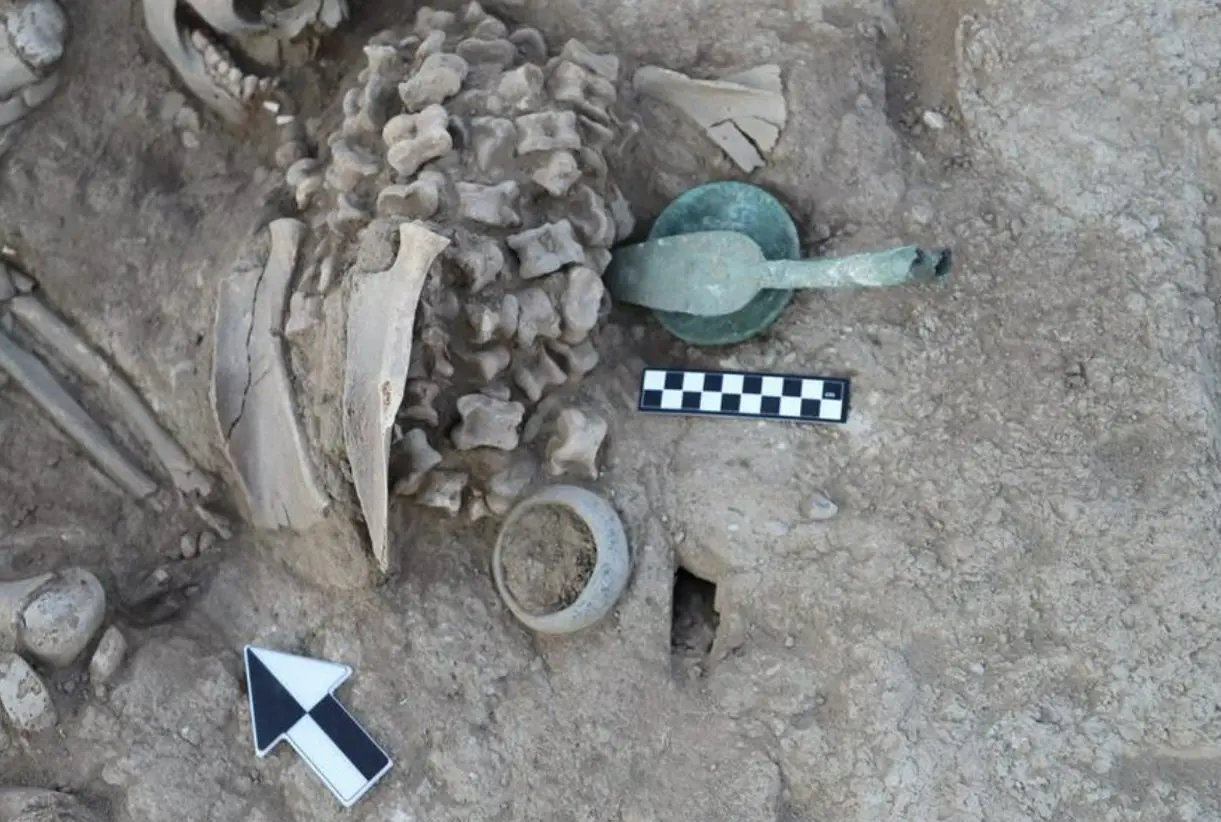Archaeologists excavating at the Ainabulak-Temirsu necropolis have uncovered the burial of a Bronze Age woman.
The necropolis is located at Ainabulak, a village in the eastern region of Kazakhstan. Since 2017, archaeologists have discovered over 100 burial, with recent excavations conducted by the Al-Farabi Kazakh National University (KazNU), working in collaboration with specialists from the University of Cambridge.
According to The Astana Times, a news outlet in Kazakhstan, the woman was found during a study of one of the burial mounds, with excavations adjacent to the mound revealing a bronze tip, a bronze bowl, a bronze object depicting a frog, several metal pommels, a mirror, and 180 assyks.
Assyks are used in traditional Kazakh games and are generally made out of the talus bone from a sheep. Each player has their own set of assyk bones, which they use to knock out other Assyks from the field.
Speaking to LiveScience, Rinat Zhumatayev, an archaeologist who led the excavation and heads the Department of Archaeology, Ethnology and Museology at Al-Farabi Kazakh National University in Kazakhstan, said: “She was buried on her left side, bent over. There were small wire earrings in both ears and beads around her neck.”
Dating of the burial is yet to be determined, however, other mounds and artefacts at the necropolis have been placed to around 2500 BC to 1800 BC during the Bronze Age.
Of significance is the bronze object in the shape of a disc depicting a frog. According to the researchers, this is the first example discovered in Kazakhstan and may be associated with the image of a woman in labour and the cult of water.
During the fieldwork, the researchers also created a full topographical plan of the Ainabulak-Temirsu necropolis and have explored several burial mounds and three ancient settlements. Samples of metal objects, bones, and soil have been removed from the burials for a detailed interdisciplinary study at the University of Cambridge.
Header Image Credit : Kazakh Ministry of Science and Higher Education / Facebook







